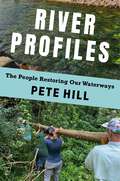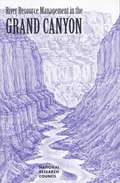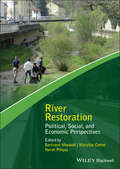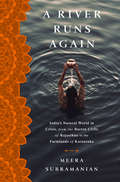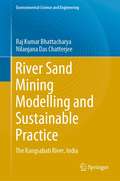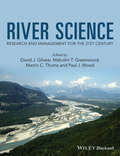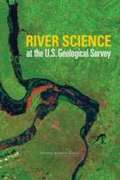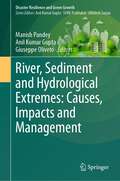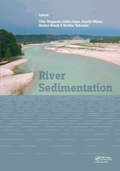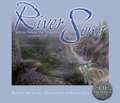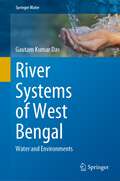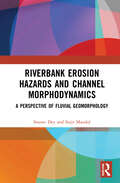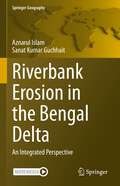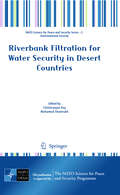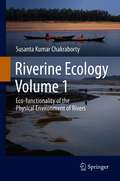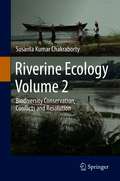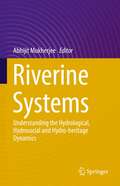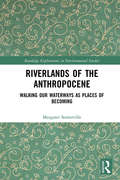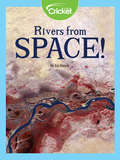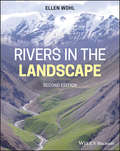- Table View
- List View
River Profiles: The People Restoring Our Waterways
by Pete HillCenturies of mismanagement and destructive development have gravely harmed American waterways, with significant consequences for the ecosystems and communities built around them. But a range of passionate and committed people have stepped up to restore streams and rivers around the United States. A husband-and-wife scientist team in Pennsylvania lead projects to unclog the sediment left by early colonists’ dams. Members of the Tulalip Tribes in western Washington State bring beavers back to headwater streams. A public servant in Milwaukee drives the sewer department to remove concrete channels and reduce flood risk. Community activists in Atlanta push for environmental justice in river restoration.Telling these stories and many more, Pete Hill—a twenty-year veteran of the field of watershed restoration—provides a deep dive into the world of river and stream conservation. He profiles the practitioners, scientists, and activists from all walks of life who take part in restoration efforts, exploring their differing, sometimes controversial approaches. Through their stories, Hill illustrates the challenges and rewards of river restoration and the evolving scientific understanding in the field. Underscoring the need for a variety of strategies adapted to different local contexts, he shows that new ideas have come from a wide range of people—from those operating the machinery to those researching stream ecology—and that Indigenous knowledge offers vital resources. At once personal and learned, insightful and inspiring, this book shines a light on the people working to heal our streams and rivers.
A River Ran Wild: An Environmental History
by Lynne CherryAn environmental history of the Nashua River, from its discovery by Indians through the polluting years of the Industrial Revolution to the ambitious cleanup that revitalized it.
River Resource Management in the Grand Canyon
by Committee to Review the Glen Canyon Environmental StudiesFederal management of water is undergoing a change that involves a drastic reduction in the number of new water projects and an increase in emphasis on the quality of water management. This book summarizes and analyzes environmental research conducted in the lower Colorado River below the Glen Canyon Dam under the leadership of the Bureau of Reclamation. It reviews alternative dam operations to mitigate impacts in the lower Colorado riverine environment and the strengths and weaknesses of large federal agencies dealing with broad environmental issues and hydropower production. While many problems remain to be solved, the Bureau of Reclamation through the Glen Canyon area. The lessons of GCES are transferable to other locations and could be the basis for a new era in the management of western waters.
River Restoration: Political, Social, and Economic Perspectives (Advancing River Restoration and Management)
by Bertrand Morandi Marylise Cottet Hervé PiégayRiver Restoration River restoration initiatives are now widespread across the world. The research efforts undertaken to support them are increasingly interdisciplinary, focusing on ecological, chemical, physical as well as societal issues. River Restoration: Political, Social, and Economic Perspectives provides a comprehensive overview of research in the field of river restoration in humanities and the social sciences. It illustrates how, in the last thirty years or so, such approaches have evolved and strengthened within the restoration sciences. The scientific community working in this domain has structured itself, often regionally and circumstantially, to critically assess and improve restoration policies and practices. As a research field, river restoration tackles three thematic axes: Human-river interactions – especially perceptions and practices of rivers, and how these interactions can be changed by restoration projects Political processes, with a particular interest in governance and decision-making, and a specific emphasis on the question of public participation in restoration projects Evaluation of the social and economic benefits of river restoration River Restoration: Political, Social, and Economic Perspectives encompasses these three topics, and more, to provide the reader with the most up-to-date and holistic view of this constantly evolving area. The book will be of particular interest to human and social scientists, biophysical scientists (hydrologists, geomorphologists, ecologists), environmental scientists, public policy makers, design or planning officers, and anyone working in the field of river restoration.
River Road Rambler: A Curious Traveler along Louisiana's Historic Byway (Southern Literary Studies)
by Mary Ann SternbergThe River Road between New Orleans and Baton Rouge hosts a fascinating mix of people, traditions, and stories. Author Mary Ann Sternberg has spent over two decades exploring this historic corridor, uncovering its intriguing and often-underappreciated places. In River Road Rambler, she presents fifteen sketches about sites along this scenic route. From familiar stops, such as the National Hansen's Disease Center Museum at Carville and the perique tobacco area of St. James Parish to lesser-known attractions such as Our Lady of Lourdes grotto in the town of Convent and the Colonial Sugars Historic District, Sternberg provides a new perspective on some of the region's most colorful places. While many of these locales remain easily accessible to any River Road rambler, Sternberg also depicts others closed to the public, giving armchair travelers an introduction to these otherwise unreachable attractions. Throughout, Sternberg captures the ambiance of her surroundings with a clear, engaging, and personal examination of the relationships between past and present. In a poignant piece on the garden of "Valcour" Aime, for example, she delves into the history of this lavish, nationally acclaimed planter's garden, established and abandoned in the mid-nineteenth century. Her visit to the now-private and protected site, which has never been altered or replanted, uncovers an extraordinary landscape -- the relic of what Aime created, slowly overwhelmed by nature. These sketches brim with insights and observations about everything from the fire that razed The Cottage plantation to the failed attempts to salvage the reproduction of the seventeenth-century French warship Le Pelican from the bottom of the Mississippi. River Road Rambler links us to both past and present while revealing delightful and unexpected surprises only found along this storied byway.
A River Runs Again: India's Natural World in Crisis, from the Barren Cliffs of Rajasthan to the Farmlands of Karnataka
by Meera SubramanianCrowded, hot, subject to violent swings in climate, with a government unable or unwilling to face the most vital challenges, the rich and poor increasingly living in worlds a∂ for most of the world, this picture is of a possible future. For India, it is the very real present. In this lyrical exploration of life, loss, and survival, Meera Subramanian travels in search of the ordinary people and microenterprises determined to revive India’s ravaged natural world: an engineer-turned-farmer brings organic food to Indian plates; villagers resuscitate a river run dry; cook stove designers persist on the quest for a smokeless fire; biologists bring vultures back from the brink of extinction; and in Bihar, one of India’s most impoverished states, a bold young woman teaches adolescents the fundamentals of sexual health. While investigating these five environmental challenges, Subramanian discovers the stories that renew hope for a nation with the potential to lead India and the planet into a sustainable and prosperous future.
River Sand Mining Modelling and Sustainable Practice: The Kangsabati River, India (Environmental Science and Engineering)
by Raj Kumar Bhattacharya Nilanjana Das ChatterjeeWorldwide demand for sand and gravel is increasing daily, as the need for these materials continues to rise, for example in the construction sector, in land filling and for transportation sector based infrastructural projects. This results in over-extraction of sand from channel beds, and hampers the natural renewal of sediment, geological setup and morphological processes of the riverine system. In India, illegal sand mining (of alluvial channels) and gravel mining (of perennial channels) are two anthropogenic issues that negatively affect the sustainable drainage system. Along the Kangsabati River in India, the consequences of sand mining are very serious. The construction of Mukutmonipur Dam (1958) on the river causes huge sediment deposition along the middle and downstream areas, these same areas are also intensely mined for sand (instream and on the flood plain). Geospatial models are applied in order to better understand the state and the resilience of stream hydraulics, morphological and river ecosystem variables during pre-mining and post-mining stages, using micro-level datasets of the Kangsabati River. The book also includes practicable measures to minimize the environmental consequences of instream mining in respect to optimum sand mining. It discusses the threshold limits of each variable in stream hydraulics, morphological and river ecological regime, and also discusses the most affected variables. Consequently, all outputs will be very useful for students, researchers, academicians, decision makers and practitioners and will facilitate applying these techniques to create models for other river basins.
River Science: Research and Management for the 21st Century
by David J. Gilvear Malcolm T. Greenwood Martin C. Thoms Paul J WoodRiver Science is a rapidly developing interdisciplinary field at the interface of the natural sciences, engineering and socio-political sciences. It recognises that the sustainable management of contemporary rivers will increasingly require new ways of characterising them to enable engagement with the diverse range of stakeholders.This volume represents the outcome of research by many of the authors and their colleagues over the last 40 years and demonstrates the integral role that River Science now plays in underpinning our understanding of the functioning of natural ecosystems, and how societal demands and historic changes have affected these systems. The book will inform academics, policy makers and society in general of the benefits of healthy functioning riverine systems, and will increase awareness of the wide range of ecosystem goods and services they provide.
RIVER SCIENCE at the U.S. Geological Survey
by National Research Council of the National AcademiesRivers provide about 60 percent of the nation’s drinking water and irrigation water and 10 percent of the nation’s electric power needs. The multiple and sometimes incompatible services demanded of rivers often lead to policy and management conflicts that require the integration of science-based information. This report advises the U.S. Geological Survey on how it can best address river science challenges by effectively using its resources and coordinating its activities with other agencies. The report identifies the highest priority river science issues for the USGS, including environmental flows and river restoration, sediment transport and geomorphology, and groundwater surface-water interactions. It also recommends two cross-cutting science activities including surveying and mapping the nation’s river systems according to key physical and landscape features, and expanding work on predictive models, especially those that simulate interactions between physical-biological processes. The report identifies key variables to be monitored and data-managed. It proposes enhancements in streamflow, biological, and sediment monitoring; these include establishing multidisciplinary, integrated reach-scale monitoring sites and developing a comprehensive national sediment monitoring program. Finally, it encourages the USGS to be at the forefront of new technology application, including airborne lidar and embedded, networked, wireless sensors.
River, Sediment and Hydrological Extremes: Causes, Impacts and Management (Disaster Resilience and Green Growth)
by Manish Pandey Anil Kumar Gupta Giuseppe OlivetoThis edited book provides a platform for knowledge sharing in all areas related to the rivers, sediment and hydrological extremes. It explains the hypothesis that river flow and sediment transport are intimately linked to erosion, scour and sediment deposition. Sediment transport, erosion and deposition are driven by local base-level changes and are highly variable in space and time. These concepts have serious implication for understanding the recent development of the River, Sediment and Hydrological Extremes.The natural hazards posed by hydrologic events and river systems depend on the uncertainty of hydrological events. This ability is affected by change in climatic conditions. Climate change studies have revealed that the frequency of extreme weather phenomena with increasing damage to human assets has gradually grown worldwide. As a consequence, rainfall events concentrated in time and space are expected to lead to serious local flooding and sediment transport in many parts of the world. Floods are remarkable hydro-meteorological phenomena and forceful agents of geomorphic evolution in most physical geographical belts and, from the viewpoint of human society, among the most important environmental hazards. According to the Indian Environment Agency, floods rank as number one on the list of natural disasters in India over the past decade.This book is an attempt to fill the gap in literature and bring forth evidence based latest research about precise estimation of erosion and scour, which is essential to reduce the hazards. The book explains that lack of preparedness and appropriate adaptation strategy makes people more risk-prone. It highlights the vulnerability in South Asia region about the impacts of flood, sediments, and river hazards because a large portion of its population depends on sensitive sectors like agriculture and forestry for livelihoods and several other reasons.The book is relevant for academician, researchers and students of disaster management, hydrology and ecology.
River Sedimentation: Proceedings of the 13th International Symposium on River Sedimentation (Stuttgart, Germany, 19-22 September, 2016)
by Silke Wieprecht Stefan Haun Karolin Weber Markus Noack Kristina TerheidenSediment dynamics in fluvial systems is of great ecological, economic and human-health-related significance worldwide. Appropriate management strategies are therefore needed to limit maintenance costs as well as minimize potential hazards to the aquatic and adjacent environments. Human intervention, ranging from nutrient/pollutant release to physical modifications, has a large impact on sediment quantity and quality and thus on river morphology as well as on ecological functioning. Truly understanding sediment dynamics requires as a consequence a multidisciplinary approach.River Sedimentation contains the peer-reviewed scientific contributions presented at the 13th International Symposium on River Sedimentation (ISRS 2016, Stuttgart, Germany, 19-22 September 2016), and includes recent accomplishments in theoretical developments, numerical modelling, experimental laboratory work, field investigations and monitoring as well as management methodologies.
River Song with The Banana Slug String Band
by Steve Van ZandtA river is a wonderful thing, from the trickle of snowmelt to the ocean, and from icy winter through a warm autumn--and is celebrated in this volume through illustrations, verse and a song by a popular children's band.
River Systems of West Bengal: Water and Environments (Springer Water)
by Gautam Kumar DasThe book explains the basic concepts of river water quality index, river environments, shifting of river courses, dams and barrages – their merits and demerits, mutual interdependence of river and society etc. in the typical geomorphic set up of West Bengal. In India, West Bengal is a riverine state due to the towering Himalayas to the north and the Bay of Bengal to the south. In between the mountain and sea, due to the location of the Gangetic delta region and its stability with space and time, the rivers of this state are gradually dying. In addition to the stability of the delta, the river channel is being filled with sediments carried along the river course from upstream. The role of dams, barrages and reservoirs in the normal flow of rivers at different geographical locations deserves discussion which is included in the book. It is to be expected that the rivers of West Bengal can be an outstanding example of mutual interdependence of science and society, all of which are included in the book.The use of different physicochemical parameters adopted for the water quality index of different rivers described in this book will provide new directions in this regard. With discussions like water quality index, river environments, shifting of river courses, reservoirs, dams and barrages, and mutual interdependence of river and society, it is the intention that this book, River Systems of West Bengal - Water and Environments, will be useful for the research and higher studies in the river related field. This book will be of interest to students and researchers of riverine environments.
River Without a Cause: An Expedition through the Past, Present and Future of Theodore Roosevelt's River of Doubt
by Sam MosesA riveting journey down Theodore Roosevelt's "river of doubt" with a diverse crew of adventurers, scientists, and Indigenous leaders who shine light on the past, present, and future of a natural wonder.Sam Moses took part in the adventure of a lifetime when he, along with seventeen men and two women, embarked on the Rio Roosevelt Expedition. They would follow the former president's wake down five-hundred miles of extreme whitewater into the dark heart of the Amazon. The party was guided by two chiefs from the Cinta Larga tribe—the same tribe that stalked Roosevelt&’s expedition in 1914—who, between rapids, tell the story of the tribe&’s own Trail of Tears. After the wildest whitewater is past, Moses travels with the chiefs to their village to witness the massive illegal mahogany logging from their forest, the Roosevelt Indigenous Territory. River Without a Cause puts us in the raft during those heart pounding rapid descents, as we experience the drama, dynamics and disputes between the Bull Moose and his co-leader, Brazil&’s most famous explorer, the rigid Colonel Candido Rondon. As the Amazon stands on the precipiece of hope with the election of a new Brazillian president, River Without a Cause is a moving and galvanzing tale of adventure that is a fitting tribute to this world wonder.
Riverbank Erosion Hazards and Channel Morphodynamics: A Perspective of Fluvial Geomorphology
by Sourav Dey Sujit MandalThis book explores fluvial processes and their consequences on river dynamics in India. It discusses the integration of geomorphic, hydrologic, and socio-economic data with various policies and decisions regarding sustainable river basin management. The volume looks at the origin and development of streams, chronology of fluvial geomorphology, fluvial system concept, process–form interaction, river dynamics, channel migration, flow regime, channel types, and hydraulic and morphometric parameters; and explains how changing hydro-geomorphological dynamics have influenced land use patterns, nature of fluids, behaviour of floods, etc. It examines channel migration vulnerability and bank erosion hazard vulnerability of the Torsa River in the eastern region of India as a case study using channel migration zone and Bank Erosion Hazard Index models. The book presents a new research framework based on field surveys, scientific investigations, and analytical techniques and methods to interpret key geoinformatics data. With its extensive illustrations, this book will be useful to students, teachers, and researchers of geography, earth sciences, environmental geology, and environment and disaster management. It will also interest geographers, civil engineers, hydrologists, geomorphologists, planners, and other individuals and organizations working on fluvial processes and riverbank erosion problems globally.
Riverbank Erosion in the Bengal Delta: An Integrated Perspective (Springer Geography)
by Aznarul Islam Sanat Kumar GuchhaitThis book discusses the issue of riverbank erosion and its associated causes, risks and social challenges in the Bengal Delta. The book covers the physical processes and indicators of riverbank erosion such as sediment flux and channel morphology, the anthropogenic and natural causes of erosion, the social consequences that afflict vulnerable communities who depend on the delta for their livelihoods, and potential solutions to harmful erosion processes such as bioengineering methods and increased community governance through a socio-hydrological approach. Though the Bengal Delta is one of the most populated regions in the world, few publications exist that discuss riverbank erosion as a major threat to environmental and livelihood sustainability in a comprehensive manner. The book will fill this gap in research for students and researchers in geography and environmental sciences, and will engage regional planners, decision makers and policy makers to further their understanding of the complex social and environmental aspects of the Bengal Delta associated with persistent and worsening riverbank erosion.
Riverbank Filtration for Water Security in Desert Countries
by Chittaranjan Ray Mohamed ShamrukhRiverbank filtration is a low cost, yet efficient water treatment technology. It has most potential to provide safe drinking water to large cities located along rivers or lakes. In particular, it is ideal for large population centres in developing countries, where the cost of building extensive treatment facilities is prohibitive. Water filtration can be successfully implemented using naturally occurring sand and gravel along the river/lake banks. The cost of water produced by this means is much lower than that of water treated in conventional treatment plants. Authored by a multi-disciplinary team of experts, this volume addresses the scientific basis of the filtration process, and also numerous topics of importance for the planning, technical realization, and security of such plants. Their application for the removal of relevant chemical pollutants and a variety of pathogens is analysed in detail.
Riverine Ecology Volume 1: Eco-functionality of the Physical Environment of Rivers
by Susanta Kumar ChakrabortyThis book is part of a two-volume set that offers an innovative approach towards developing methods and tools for assigning conservation categories of threatened taxa and their conservation strategies by way of different phases of eco-restoration in the context of freshwater river systems of tropical bio-geographic zones. The set provides a considerable volume of research on the biodiversity component of river ecosystems, seasonal dynamics of physical chemical parameters, geo-hydrological properties, types, sources and modes of action of different types of pollution, river restoration strategies and methodologies for the ongoing ecological changes of river ecosystems. Volume 1 provides an in-depth analysis of different theories with international relevance pertaining to the functioning of river ecosystems, shaping their structure and contributing ecological services, and includes the principles of riverine ecology such as biogeochemical cycles, physiography, hydrogeology, and physico-chemical parameters. It covers the basic concepts and principles of water within riverine ecosystems, and the underlying ecological principles operating to ensure ecological stability and sustainability of the fluvial ecosystem. The book explains the ecofunctionality of different geo-morphological, geo-hydrological and physico-chemical factors and processes in changing time scales and spaces, with special emphasis on the tropical fresh water rivers in India.
Riverine Ecology Volume 2: Biodiversity Conservation, Conflicts and Resolution
by Susanta Kumar ChakrabortyThis book is part of a two-volume set that offers an innovative approach towards developing methods and tools for assigning conservation categories of threatened taxa and their conservation strategies by way of different phases of eco-restoration in the context of freshwater river systems of tropical bio-geographic zones. The set provides a considerable volume of research on the biodiversity component of river ecosystems, seasonal dynamics of physical chemical parameters, geo-hydrological properties, types, sources and modes of action of different types of pollution, river restoration strategies and methodologies for the ongoing ecological changes of river ecosystems.Volume 2 highlights biodiversity potential in aiding the resistance and resilience of riverine ecosystem functioning and their synergistic effects on ongoing environmental perturbations. Comprehensive information on the conservation of river-associated-wildlife is provided, covering the impacts of pollution, land-use changes, river policies, and ecosystem restoration strategies. The book offers an innovative approach towards developing methods and tools for assigning conservation categories of threatened taxa, and covers their conservation strategies by way of different phases of eco-restoration in the context of freshwater river systems of tropical bio-geographic zones.
Riverine Systems: Understanding the Hydrological, Hydrosocial and Hydro-heritage Dynamics
by Abhijit MukherjeeThis book provides a unique opportunity to integrate the knowledge on regional-scale riverine reviews to local-scale case-studies, ranging from availability to pollution, national-level river management to transboundary governance. It is an unparalleled attempt to build the bridge between the science of rivers and its history and socio-politics, thus articulating the due credence of rivers from ancient civilizations to modern human societies. The chapters in this book are organized by the sub-sections of i) Hydrology, ii) Hydrosocial and iii) Hydro-heritage, thus providing a unique knowledge on the river studies for historians, scientists, planners, social scientists and policymakers, and are written by leading experts and researchers from across the globe.
Riverlands of the Anthropocene: Walking Our Waterways as Places of Becoming (Routledge Explorations in Environmental Studies)
by Margaret SomervilleThis is an invitation to readers to ponder universal questions about human relations with rivers and water for the precarious times of the Anthropocene. The book asks how humans can learn through sensory embodied encounters with local waterways that shape the architecture of cities and make global connections with environments everywhere. The book considers human becomings with urban waterways to address some of the major conceptual challenges of the Anthropocene, through stories of trauma and healing, environmental activism, and encounters with the living beings that inhabit waterways. Its unique contribution is to bring together Australian Aboriginal knowledges with contemporary western, new materialist, posthuman and Deleuzean philosophies, foregrounding how visual, creative and artistic forms can assist us in thinking beyond the constraints of western thought to enable other modes of being and knowing the world for an unpredictable future. Riverlands of the Anthropocene will be of particular interest to those studying the Anthropocene through the lenses of environmental humanities, environmental education, philosophy, ecofeminism and cultural studies.
Rivers: Form and Process in Alluvial Channels (Routledge Revivals)
by Keith RichardsOriginally published in 1982, this book presents a detailed review of alluvial river form and process and integrates the distinct but related approaches of geomorphologists, geologists and engineers to the subject. It outlines the environmental catchment factors that control the development of channel equilibrium and provides a detailed account of the sediment transport processes that represent the physical mechanisms by which channel adjustment occurs. Where possible it evaluates theoretical analyses in the context of the empirical evidence. Rivers should prove a valuable textbook for geomorphology students on advanced undergraduate courses on river behaviour and will also be of interest to students of hydraulics and sedimentology and to those concerned with civil and environmental engineering, river management and channel design, maintenance and management in the water industry
Rivers from Space!
by Liz HuyckWhen on land, rivers, lakes, and oceans appear flat. With the aid of satellites, these bodies of water appear to have many designs! Explore the art of nature and how satellites detect the temperature of the many bodies of water around the globe.
Rivers in the Landscape: Science And Management
by Ellen WohlRivers are the great shapers of terrestrial landscapes. Very few points on Earth above sea level do not lie within a drainage basin. Even points distant from the nearest channel are likely to be influenced by that channel. Tectonic uplift raises rock thousands of meters above sea level. Precipitation falling on the uplifted terrain concentrates into channels that carry sediment downward to the oceans and influence the steepness of adjacent hill slopes by governing the rate at which the landscape incises. Rivers migrate laterally across lowlands, creating a complex topography of terraces, floodplain wetlands and channels. Subtle differences in elevation, grain size, and soil moisture across this topography control the movement of ground water and the distribution of plants and animals. Rivers in the Landscape, Second Edition, emphasizes general principles and conceptual models, as well as concrete examples of each topic drawn from the extensive literature on river process and form. The book is suitable for use as a course text or a general reference on rivers. Aimed at advanced undergraduate students, graduate students, and professionals looking for a concise summary of physical aspects of rivers, Rivers in the Landscape is designed to: emphasize the connectivity between rivers and the greater landscape by explicitly considering the interactions between rivers and tectonics, climate, biota, and human activities; provide a concise summary of the current state of knowledge for physical process and form in rivers; reflect the diversity of river environments, from mountainous, headwater channels to large, lowland, floodplain rivers and from the arctic to the tropics; reflect the diverse methods that scientists use to characterize and understand river process and form, including remote sensing, field measurements, physical experiments, and numerical simulations; reflect the increasing emphasis on quantification in fluvial geomorphology and the study of Earth surfaces in general; provide both an introduction to the classic, foundational papers on each topic, and a guide to the latest, particularly insightful and integrative references.
Rivers in the Landscape: Science and Management
by Ellen WohlRivers in the Landscape: Science and Management offers a comprehensive and accessible overview of the current state of knowledge for river process and form, taking a holistic approach to the subject with coverage of integrated river science and management in practice. The processes and forms present in channelized surface flow–rivers–are systematically explored in this book to • emphasize the connectivity between rivers and the greater landscape by explicitly considering the interactions between rivers and tectonics, climate, biota, and human activities; • provide a concise summary of the current state of knowledge for physical process and form in rivers; • reflect the diversity of river environments, from mountainous, headwater channels to large, lowland, floodplain rivers and from the arctic to the tropics; • reflect the diverse methods that scientists use to characterize and understand river process and form, including remote sensing, field measurements, physical experiments, and numerical simulations; • reflect the increasing emphasis on quantification in fluvial geomorphology and the study of Earth surfaces in general; • provide both an introduction to the classic, foundational papers on each topic, and a guide to the latest, particularly insightful and integrative references. Aimed at advanced undergraduate students, graduate students, and professionals looking for a concise summary of physical aspects of rivers, this book emphasizes general principles and conceptual models, as well as concrete examples of each topic drawn from the extensive literature on river process and form.
